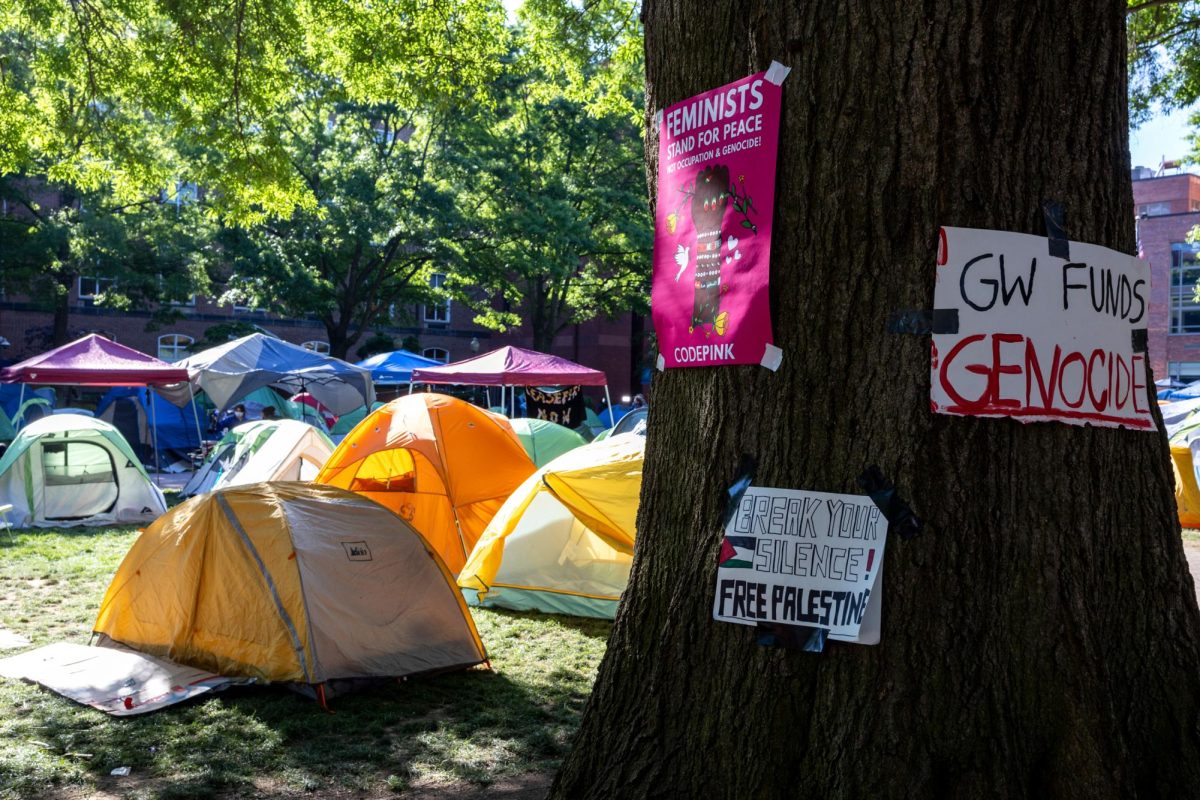Professors are reaching out to Foggy Bottom and D.C. residents through the Faculty Senate’s University and Urban Affairs Committee by organizing a community speaker series.
The speaker series takes place at St. Mary’s Court, a retirement community next to New Hall on 24th Street. The committee also arranges for classes to perform curriculum-related services for D.C. government and works through FRIENDS, a group of students, faculty, GW officials, and Foggy Bottom and West End residents, to assist residents with other needs.
The committee decided to hold the monthly speaker series at St. Mary’s Court because the location would be more welcoming to residents than an on-campus venue, said Committee Chair Lisa Benton-Short, an associate professor of geography.
“The goal of this speaker’s series was to purposefully go out to the community and share with them the interesting work that faculty and staff and even graduate students are doing at GW,” she said. “The lunches are open to everyone, and are a great way for faculty to do something in the community.”
The committee also encourages faculty to engage in service learning – providing students to serve the community by applying course material to helping organizations. Benton-Short said her Urban Geography class will map locations for “So Others Might Eat,” a nonprofit organization that helps D.C.’s poor and homeless.
The Office of D.C. and Foggy Bottom/West End Affairs works with the committee to bring faculty and students together during the monthly meetings of FRIENDS as well.
Benton-Short said she tries to attend two of the monthly FRIENDS meetings per semester and encourages faculty to go to hear community concerns about the University.
“Interaction is a much better conduit for building relationships and celebrating a strong community.” Benton-Short said. “I enjoy meeting people from the community and talking about interests and common ideas.” FRIENDS meetings are open to the public and occur on the first Tuesday of every month. The meetings alternate between business and social formats each month.
At October’s meeting, GW faculty gave a Foggy Bottom history lecture, covering the neighborhood’s development from the pre-colonial era to present day. Next month will be a business meeting. The group also holds an annual block party – which occurred Oct. 1 – and a holiday social in December.
Community members set meeting agendas and the University brings in officials to address concerns and facilitate dialog at the group’s monthly meetings, said Michael Akin, director of D.C. and Foggy Bottom/West End Affairs.
“(FRIENDS) wouldn’t be successful without the community,” Akin said. “The more we can spread the message of cooperation the better off we’ll be.”
Attendance at FRIENDS meetings has increased from six community members and three GW officials at the first meeting to about 65 attendees per month, of which five to 10 are students or faculty members, Akin said. He added that members of community organizations and University Police Department representatives also attend.
Akin said the increase in attendance and the diversity of those who participate proves the success of the group.
Some residents oppose the FRIENDS group. Foggy Bottom Association President Joy Howell said the group is designed to bypass her organization, which protects the Foggy Bottom community from development.
“GW started the FRIENDS group to get around the poor relationship they have with the neighborhood association,” Howell said. “They would be much better off if they would just play by the rules of the Campus Plan, and then they could have a good relationship with the legitimate neighborhood association.”
The Foggy Bottom Association alleges that GW is in violation of the current Campus Plan because student enrollment is above its cap and the number of students is incorrectly counted. An independent audit conducted through D.C.’s Department of Consumer and Regulatory Affairs last month found that GW was in compliance but suggested GW might need more guidance in how it counts students.







